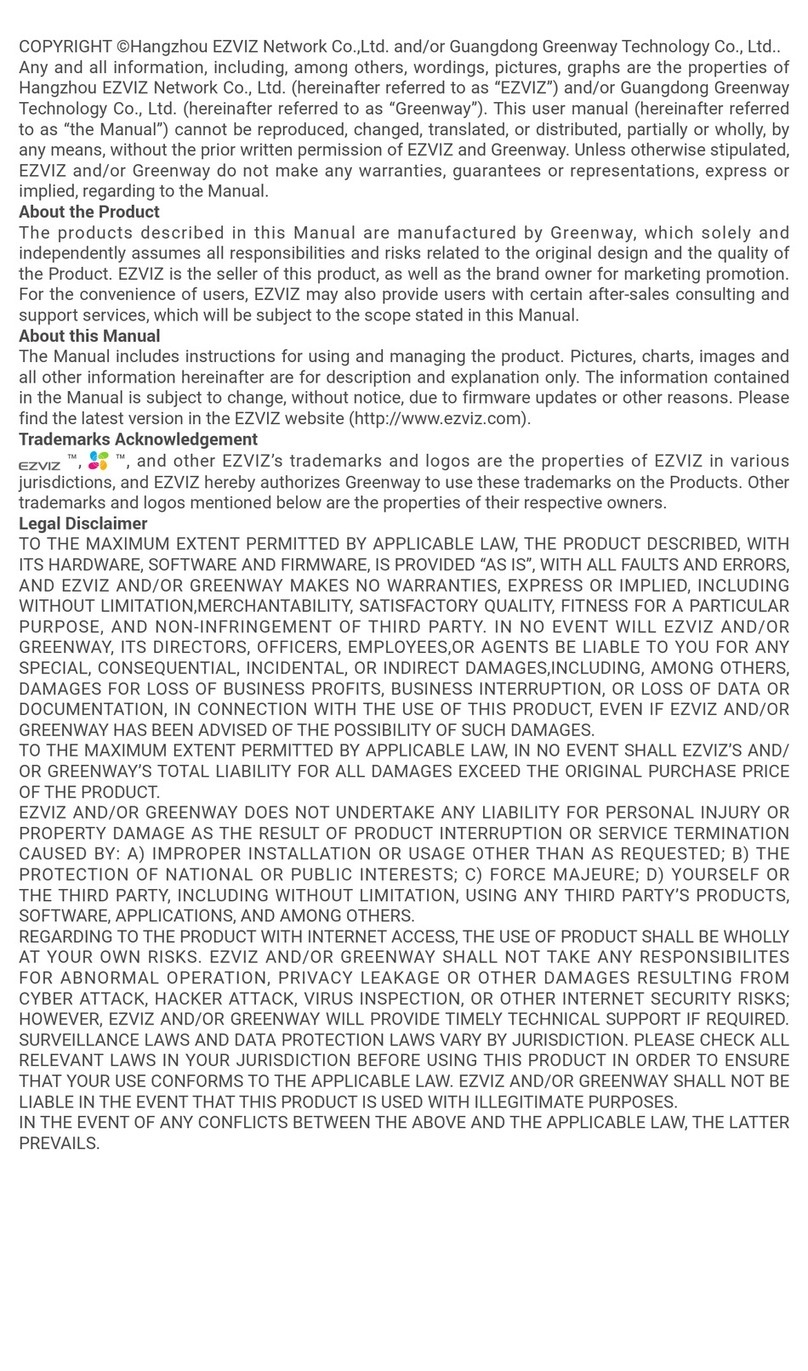
1
IMPORTANT SAFETY INSTRUCTIONS
1� Attention
Do not carry this product on an airplane.
2� Charging Safety
1. Charge the product at an environmental temperature of 32°F to 104°F (0°C to 40°C). Ensure the environment
is dry and ventilated. The charging voltage should not exceed the specified voltage range. Keep away from
inflammable materials while charging.
2. Use a standard car charging cable, AC power cable, and other accessories to charge the product. Use of non-
standard accessories may result in fire, electric shock, or other personal injuries.
3. After a long period of use, the product temperature may rise. Do not charge the product immediately and let
the product cool to room temperature before charging.
3� Moving or Storage Instructions
1. The weight of the product is 6.5KG, beware of falling off and hitting when moving the product.
2. Store the product at an environmental temperature of -4°F to 113°F (-20°C to 45°C). The place where the
product is stored should be kept dry and ventilated. The product should not be exposed to direct sunlight,
fire, or a similar heat source.
4� Maintenance
1. Do not use chemicals or detergents to clean this product. If the surface or port of the product is dirty, wipe it
with a piece of dry, soft cloth.
2. To extend the service life of the product, it is recommended to fully charge the product every 3 months.
3. The product and its accessories may contain some small parts. Please keep the product and its accessories
out of the reach of children. Children may inadvertently damage the product and its accessories, or swallow
small parts, causing suffocation or other safety hazards.
5� WARNINGS
When using this product, basic precautions should always be followed, including the following:
Read all the instructions before using the product.
• To reduce the risk of injury, close supervision is necessary when the product is used near children.
• Do not put fngers or hands into the product.
• Do not expose the product to rain or snow.
• Use of a power supply or charger not recommended or sold by the product manufacturer may result in a risk of
fire or injury to persons.
• To reduce risk of damage to the electric plug and cord, pull the plug rather than the cord when disconnecting the
product.
• Do not use the product in excess of its output rating. Overload outputs above rating may result in a risk of fire or
injury to persons.
• Do not use the product that is damaged or modifed. Damaged or modifed batteries may exhibit unpredictable
behavior resulting in fire, explosion or risk of injury.
• Do not operate the product with a damaged cord or plug, or a damaged output cable.
• Do not disassemble the product. Take it to a qualifed service person when service or repair is required. Incorrect
reassembly may result in a risk of fire or electric shock.
• Do not expose to fire or high temperatures. Exposure to fire or temperatures above 130°C may cause explosion.
• To reduce the risk of electric shock, unplug the power pack form the outlet before attempting any instructed
servicing.
•WARNING–RISKOFEXPLOSIVEGASES.
To reduce risk of battery explosion, follow these instructions and those published by battery manufacturer and
manufacturer of any equipment you intend to use in vicinity of the battery. Review cautionary marking on these
products and on engine.
•PERSONALPRECAUTIONS
Be extra cautious to reduce risk of dropping a metal tool onto battery. It might spark or short-circuit battery or
other electrical part that may cause explosion.
• When charging the internal battery, work in a well ventilated area and do not restrict ventilation in any way.
• Under abusive conditions, liquid may be ejected from the battery; avoid contact. If contact accidentally occurs,
flush with water. If liquid contacts eyes, additionally seek medical help. Liquid ejected from the battery may
cause irritation or burns.
• Do not expose a power pack to fire or excessive temperature. Exposure to fire or temperature above 130°C may
cause explosion.




























